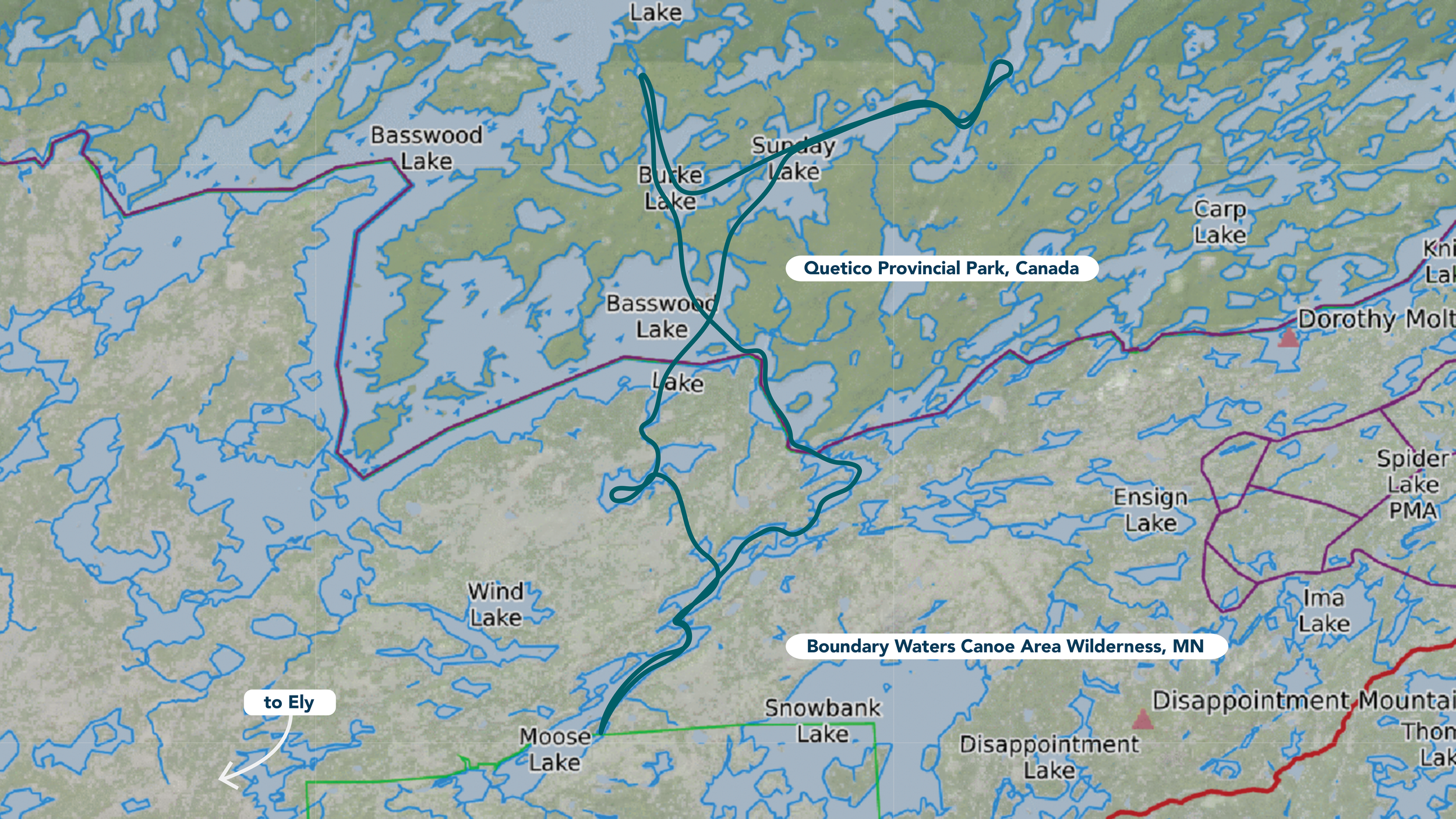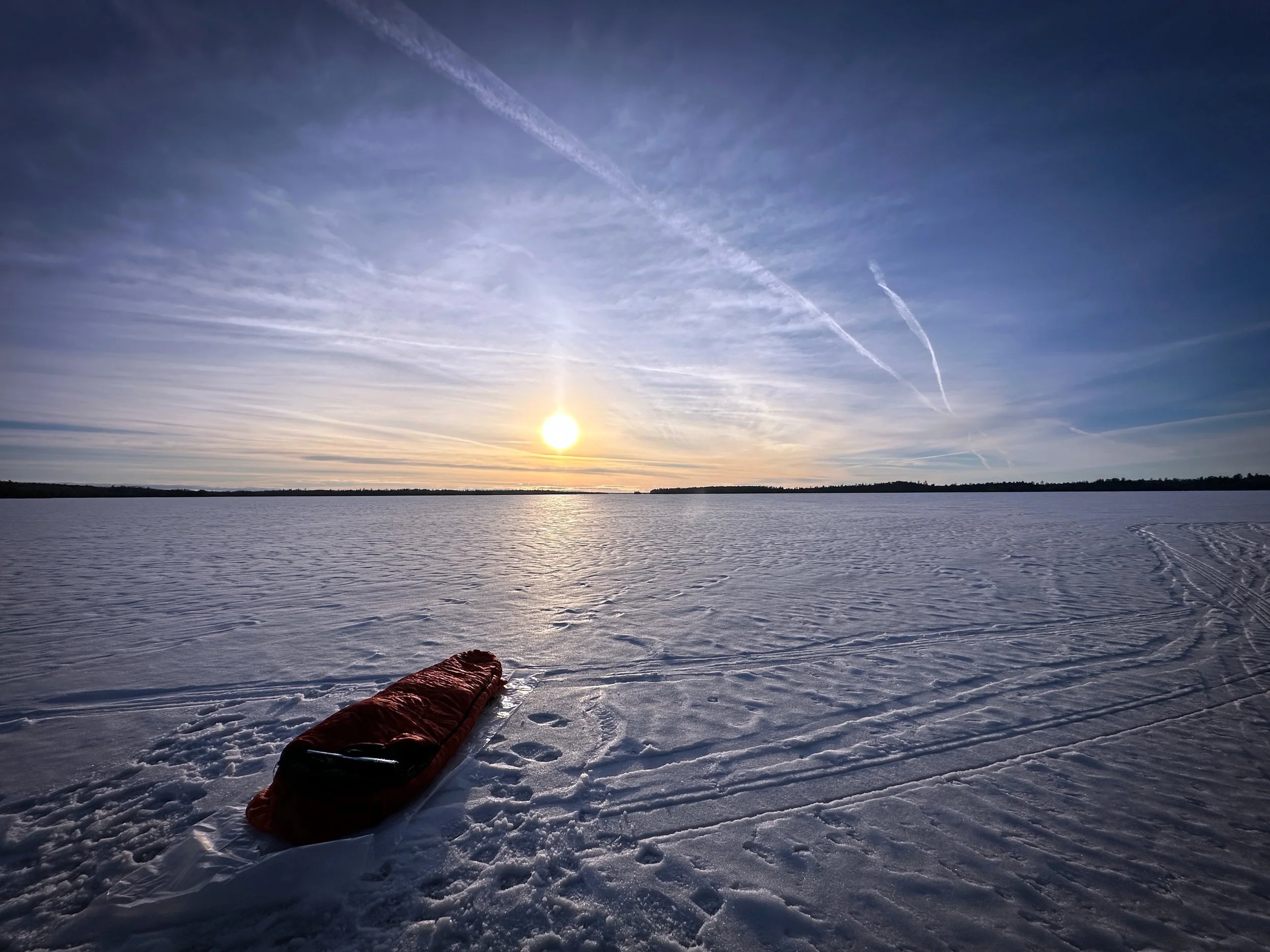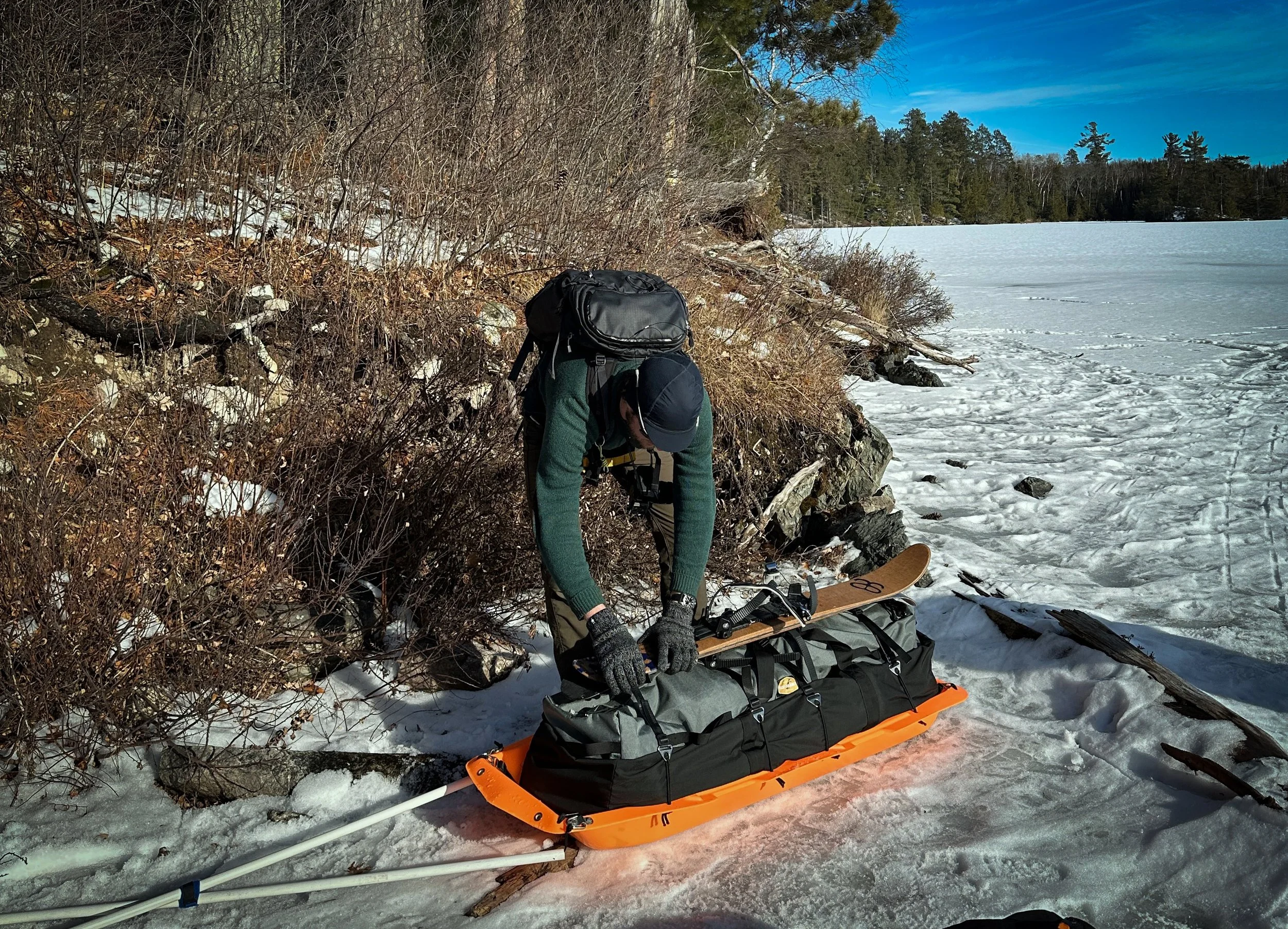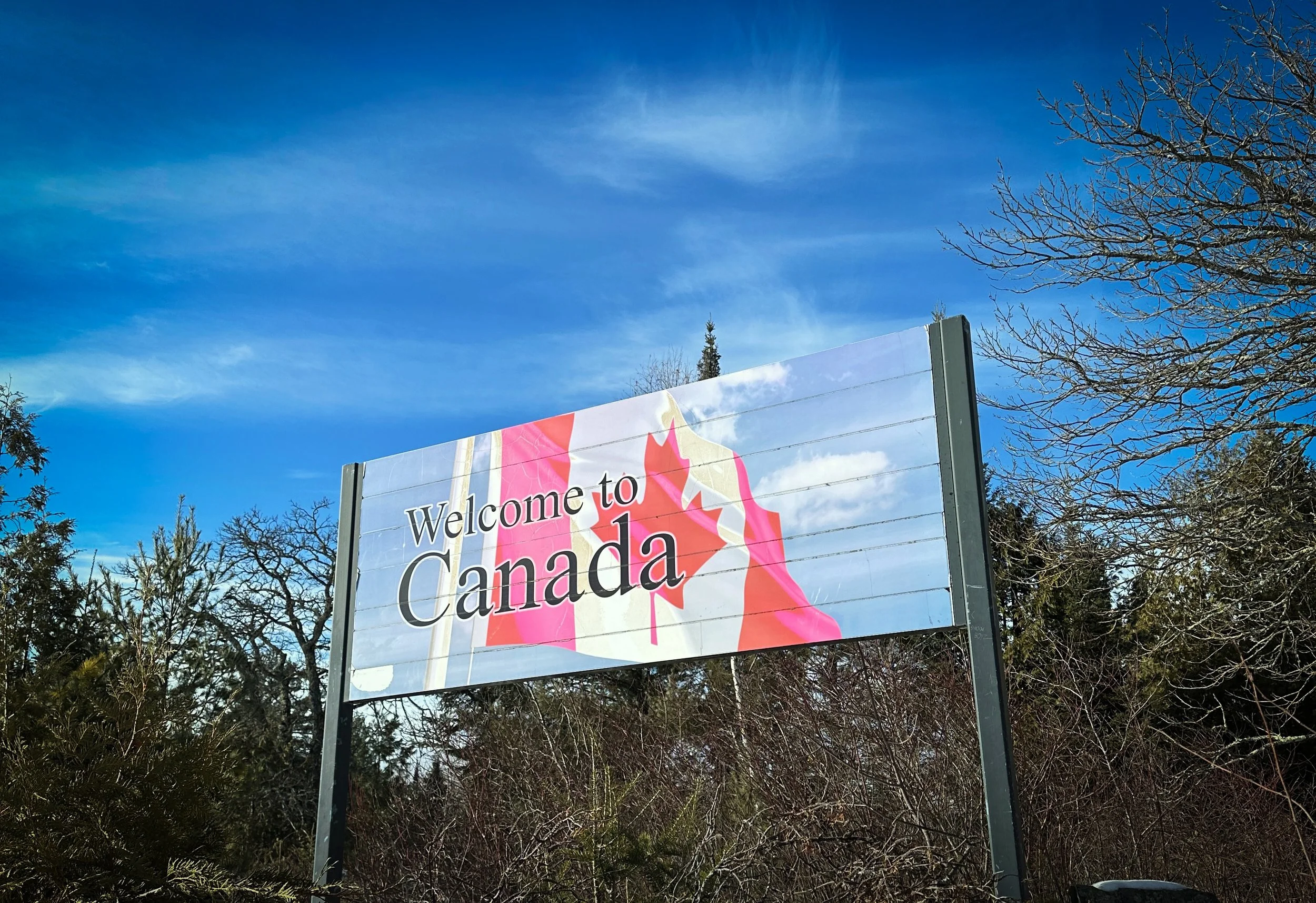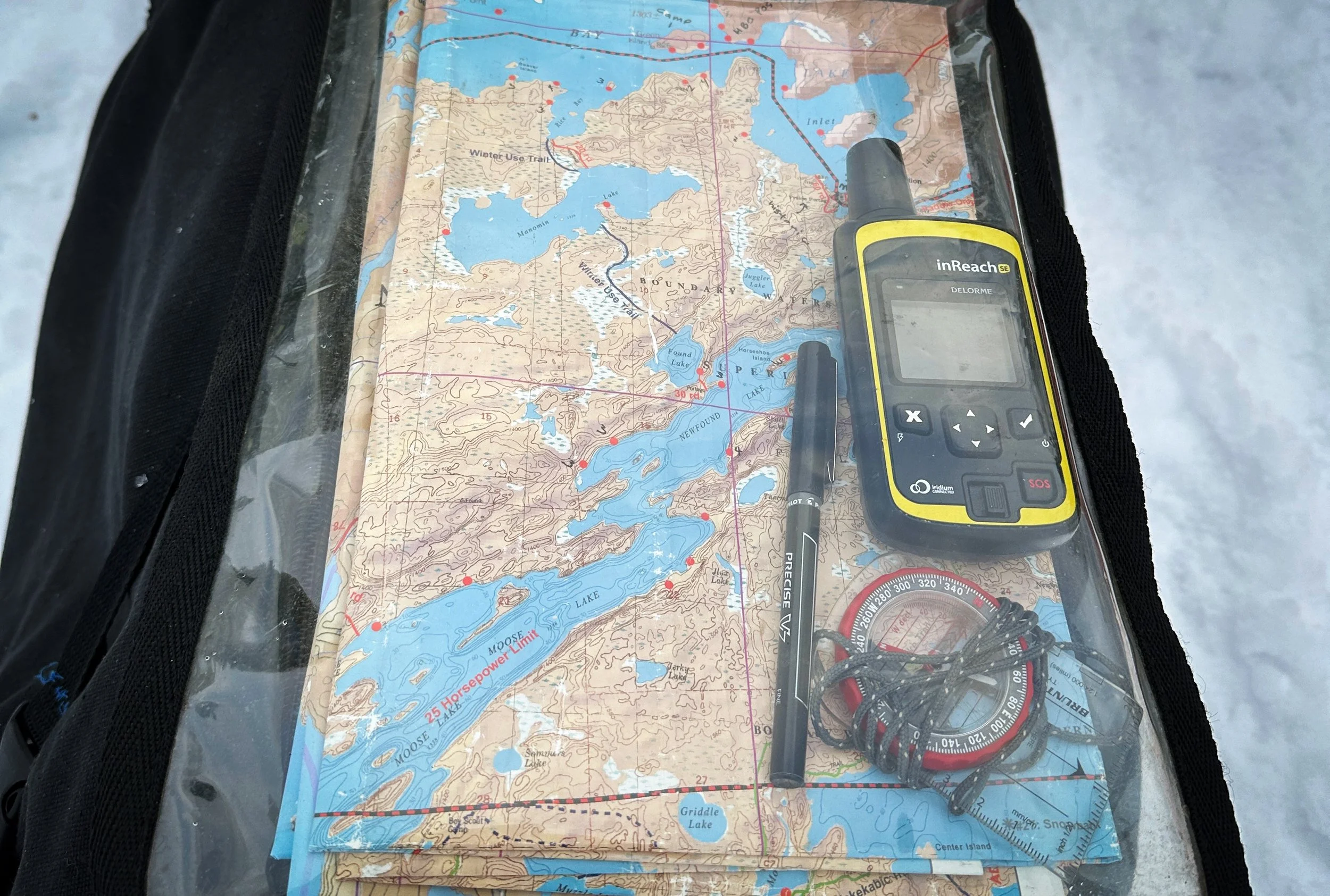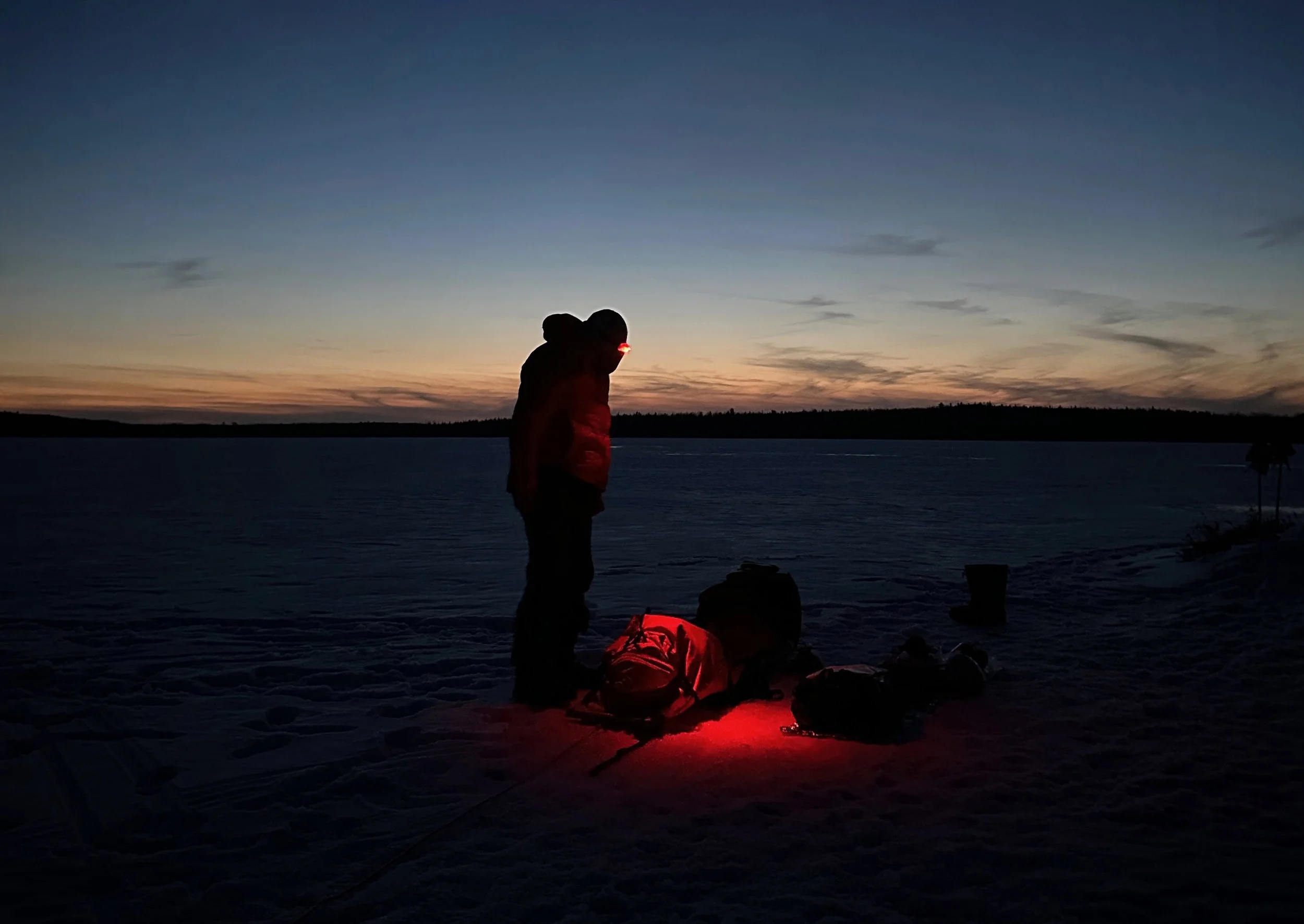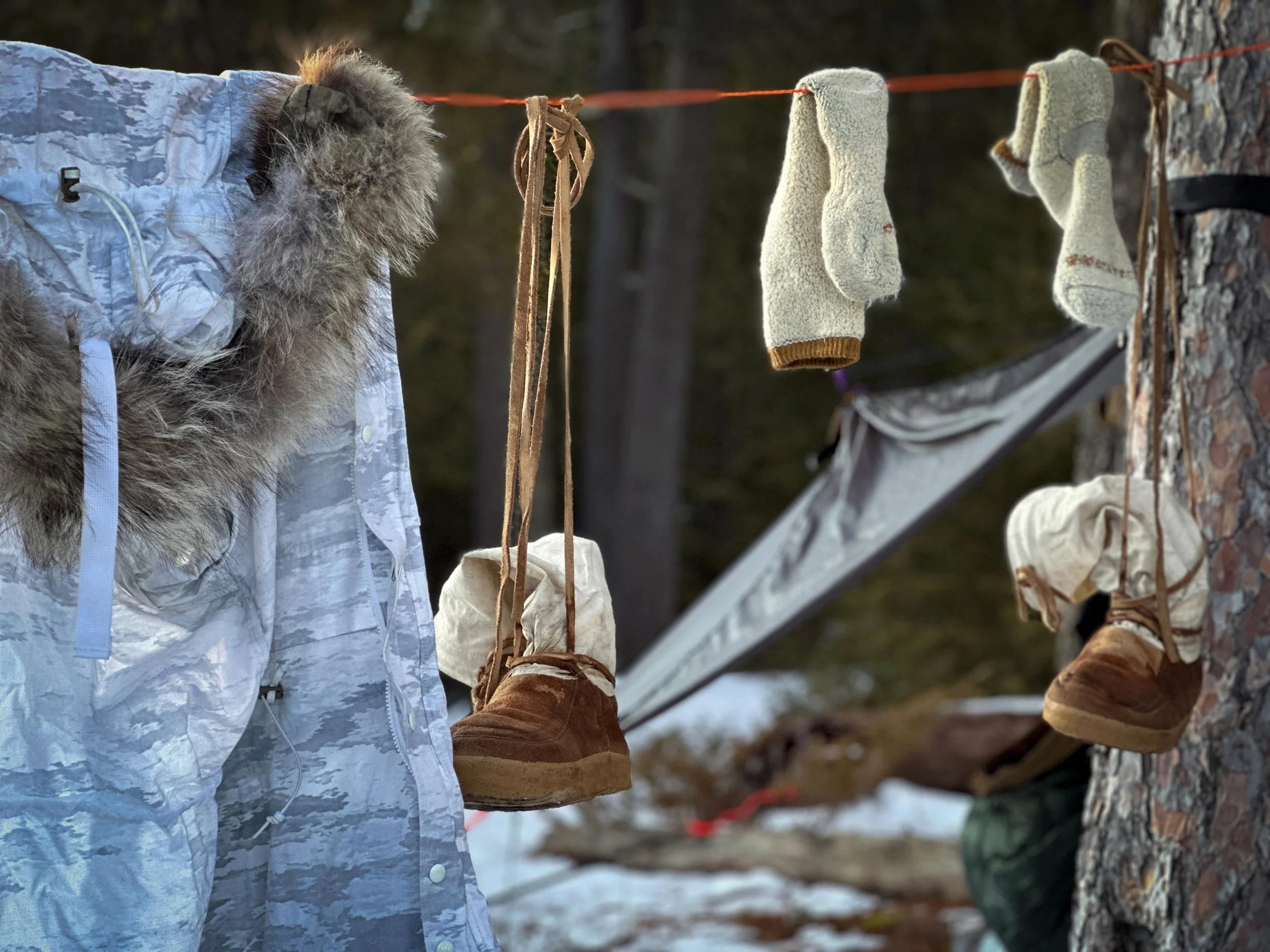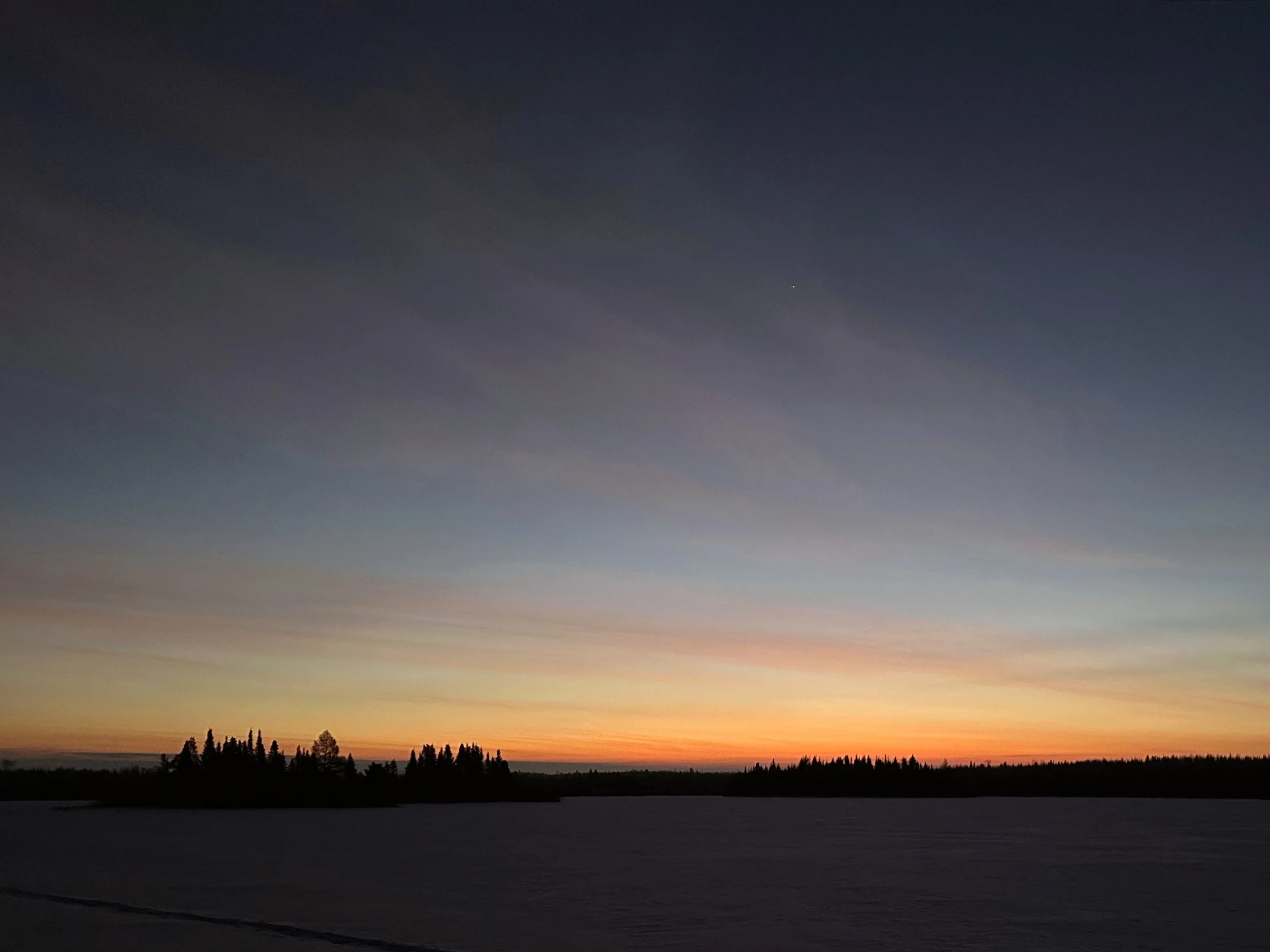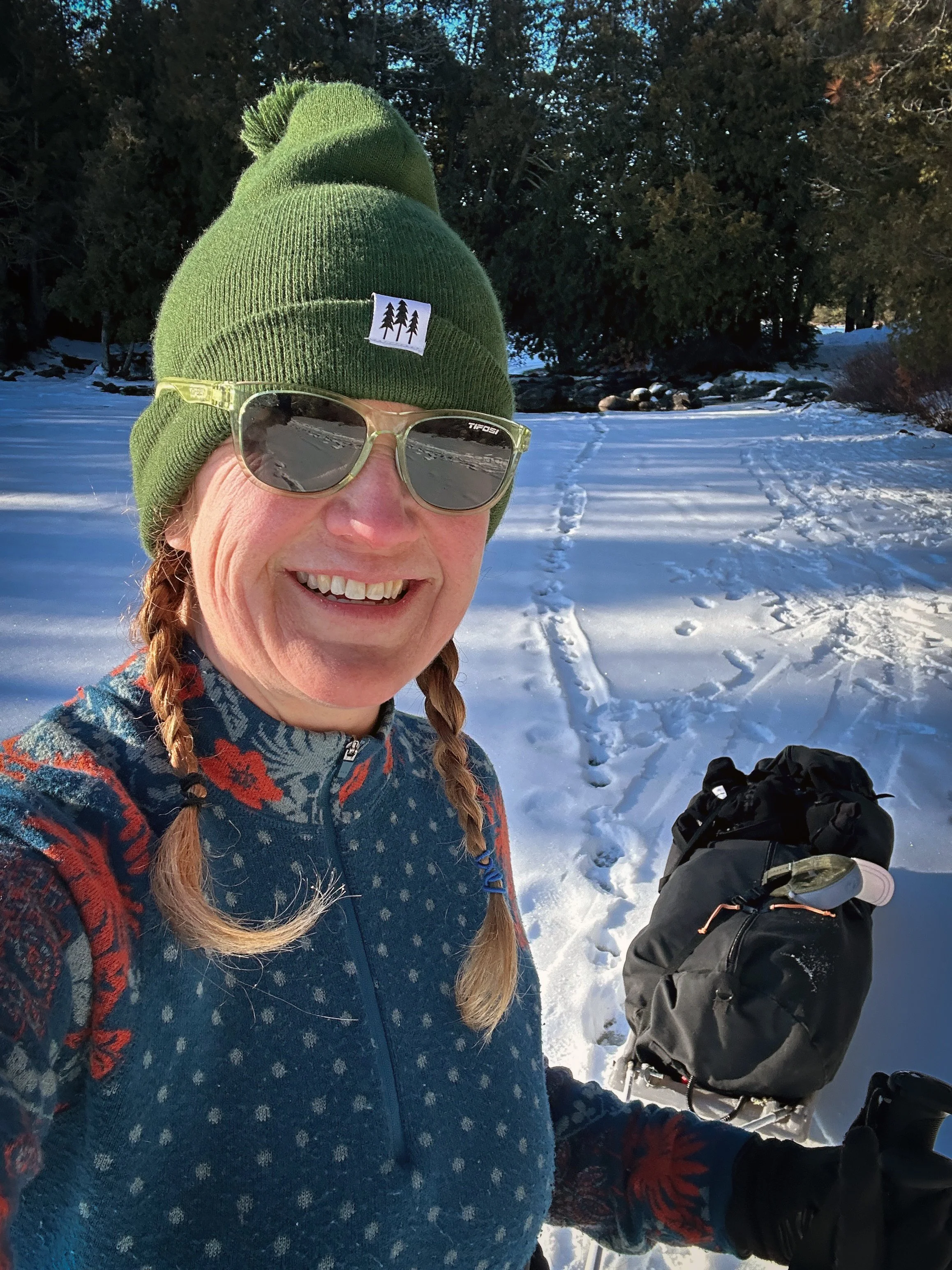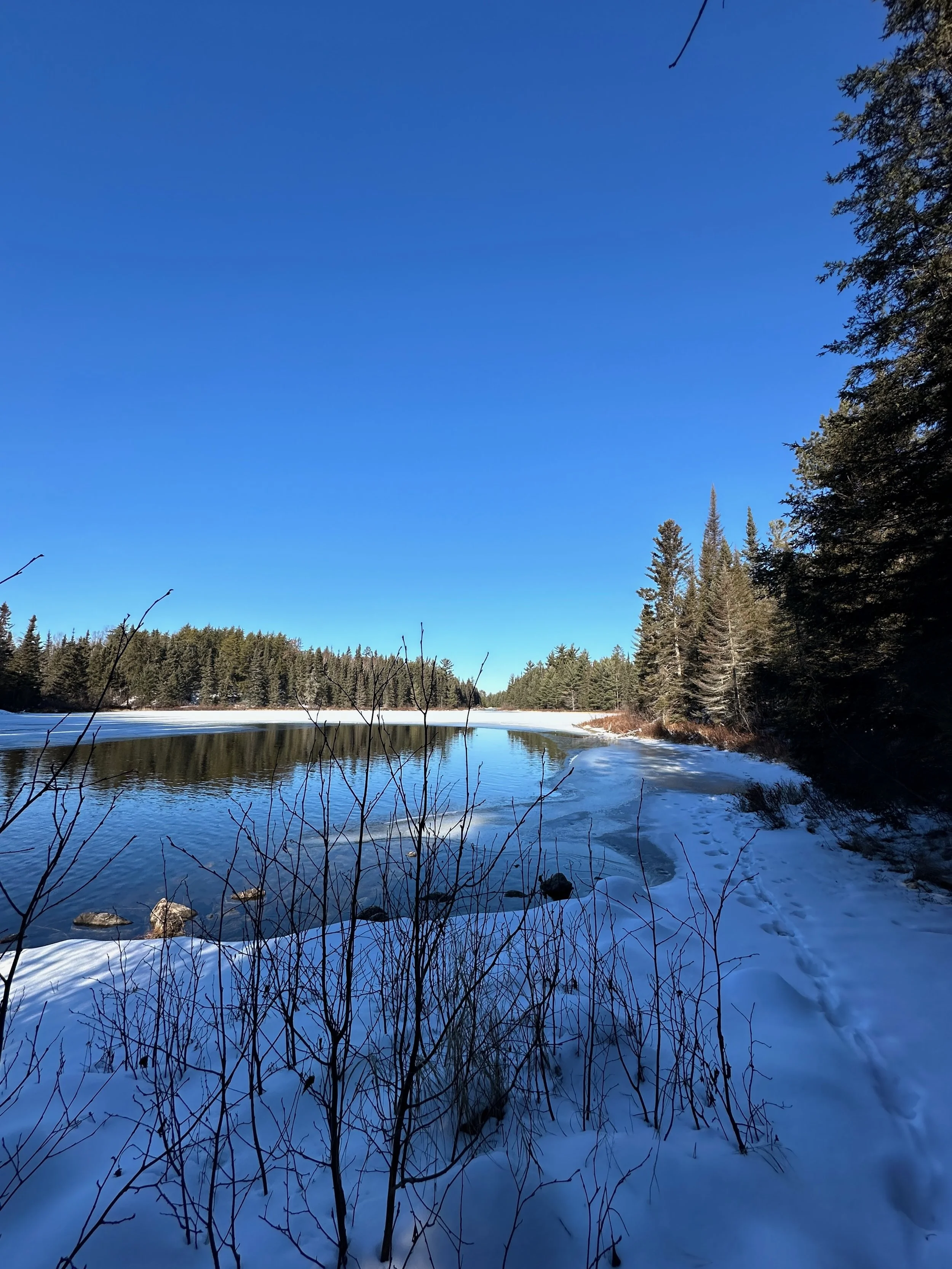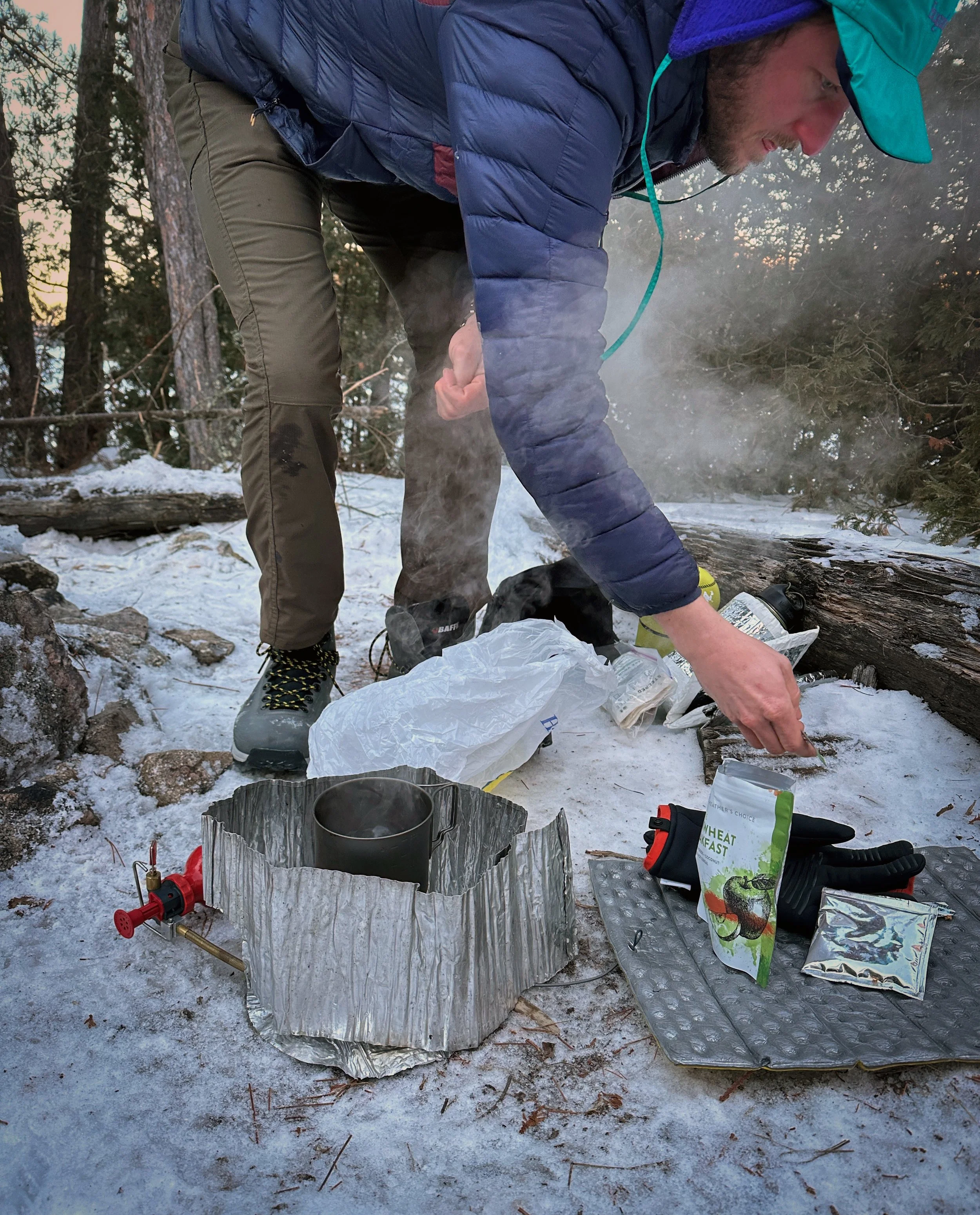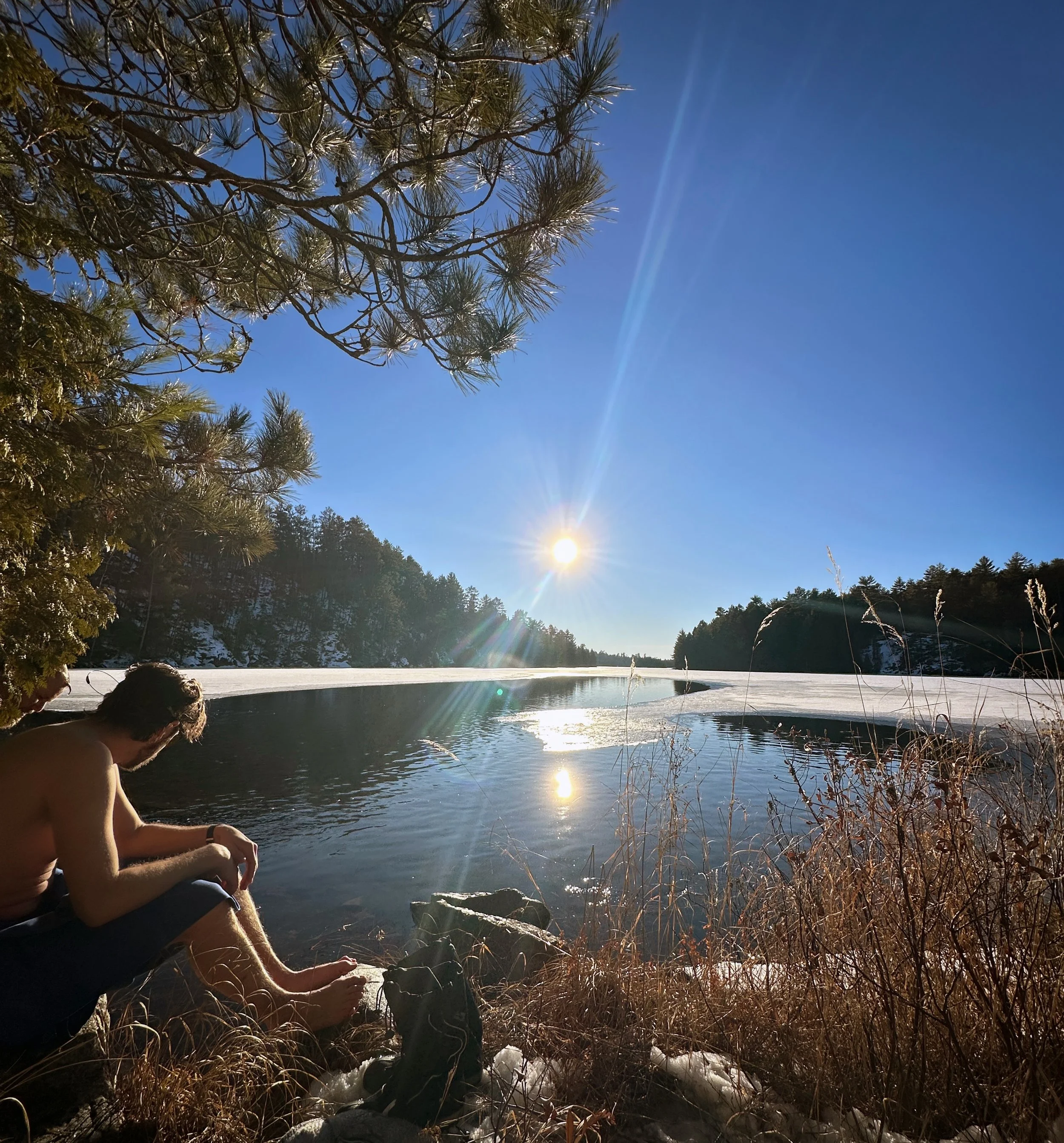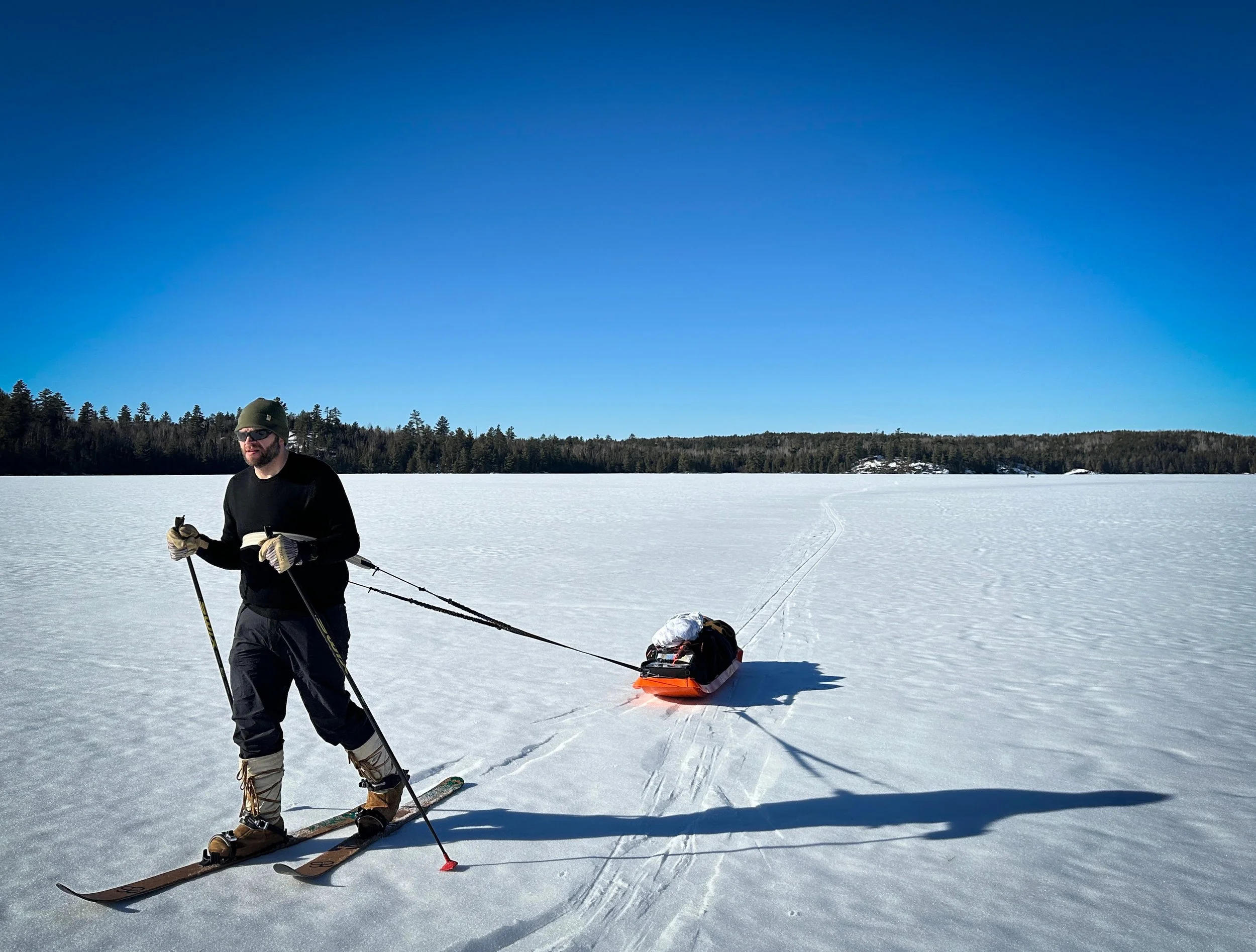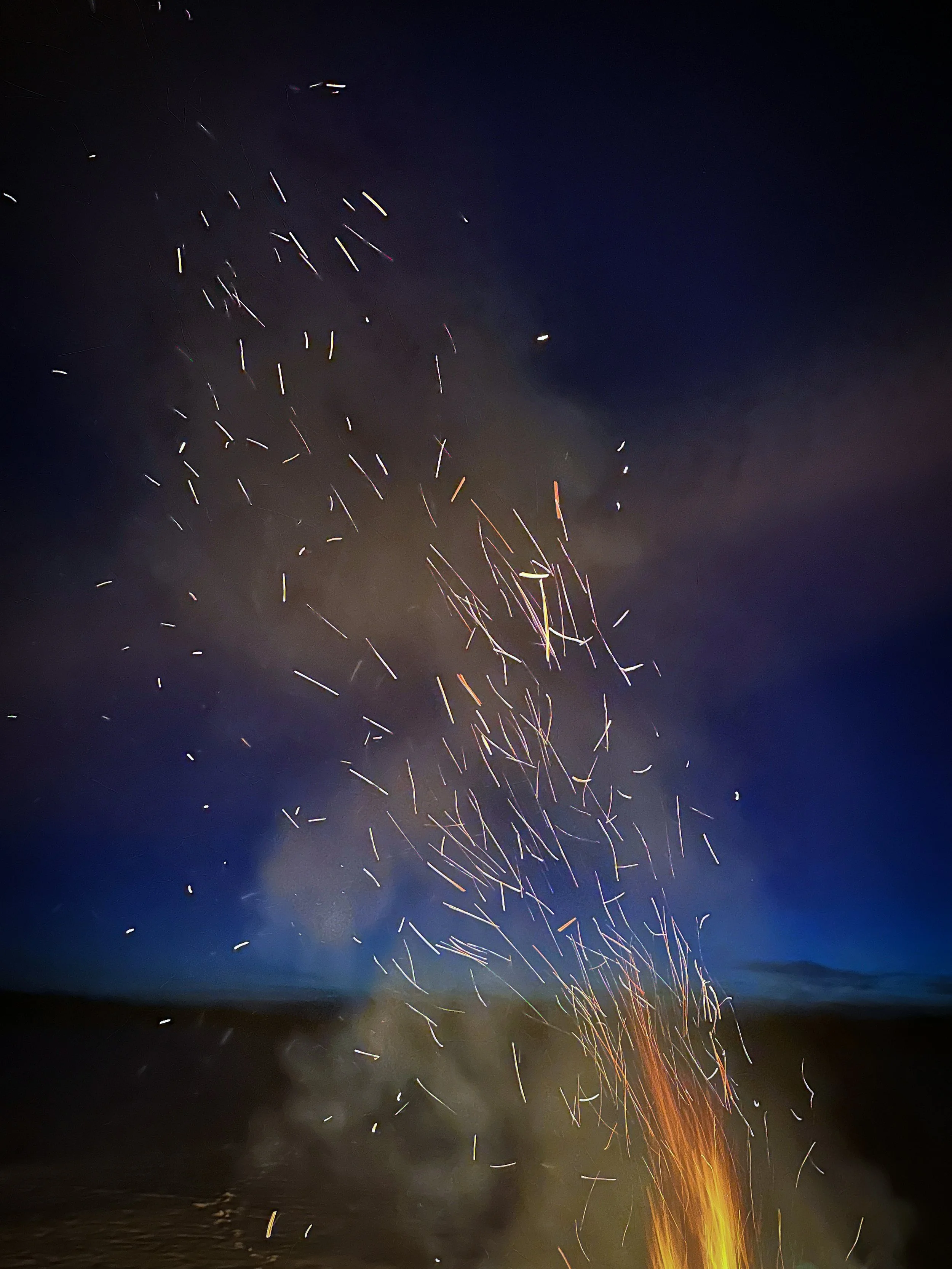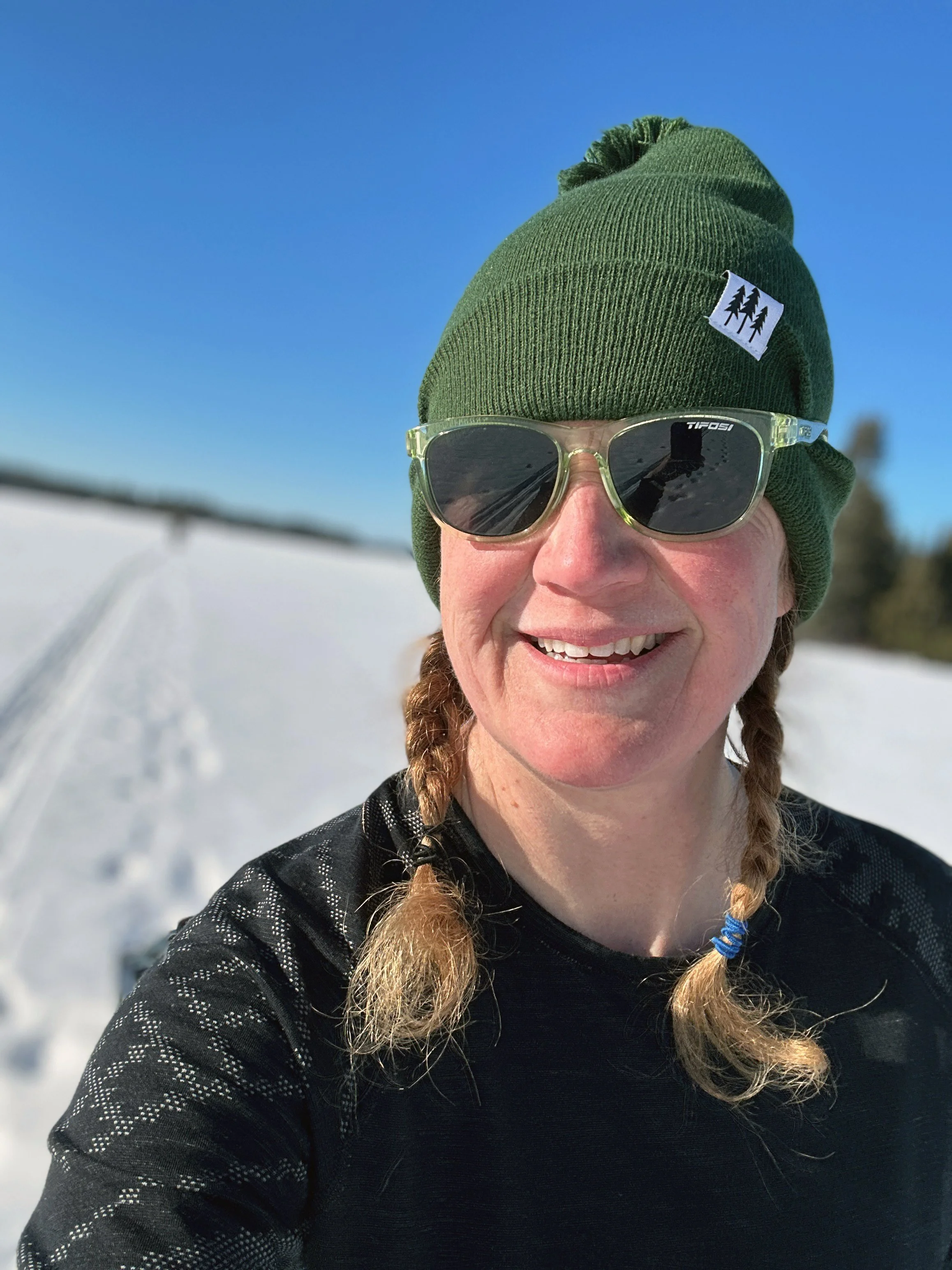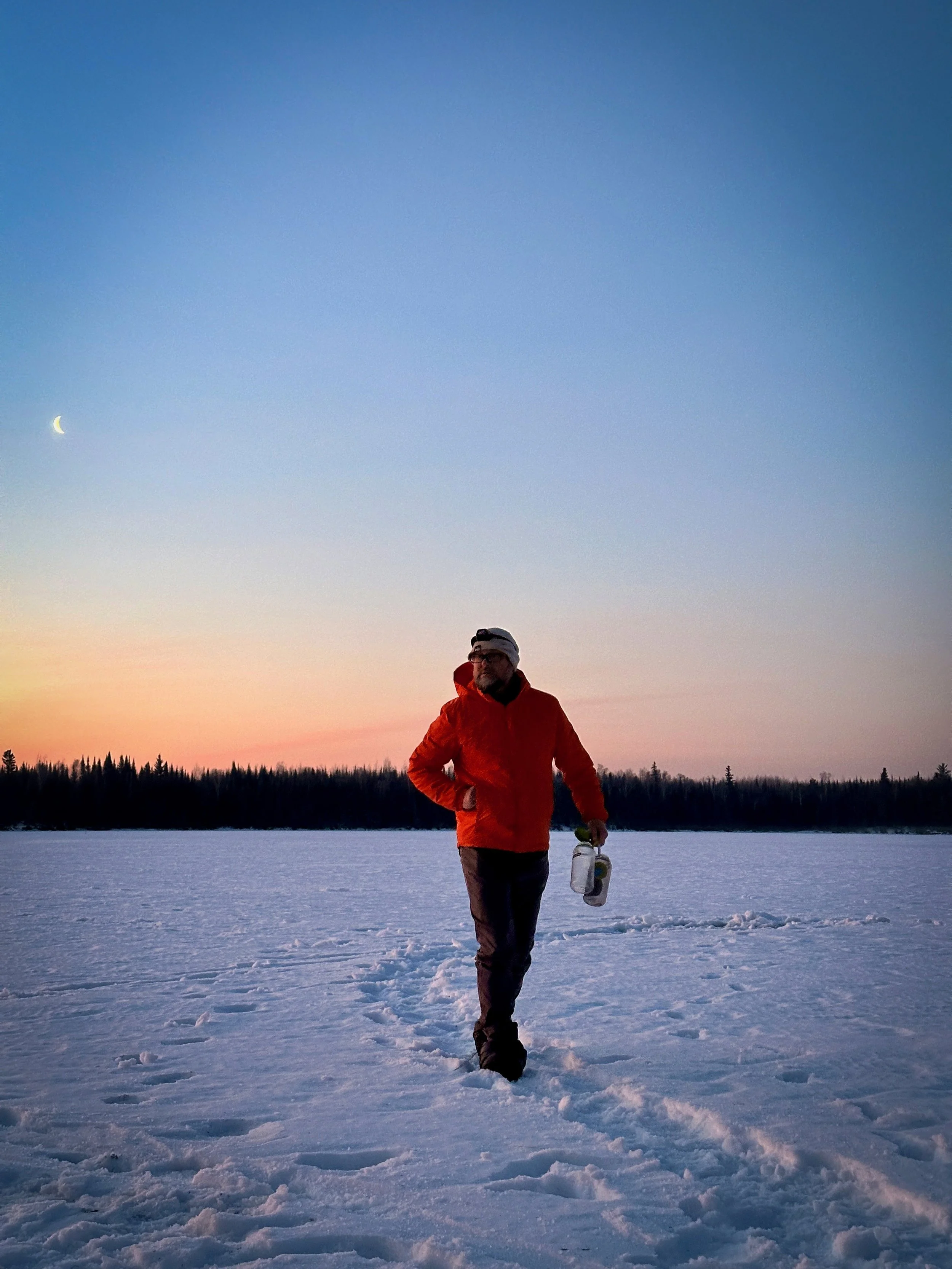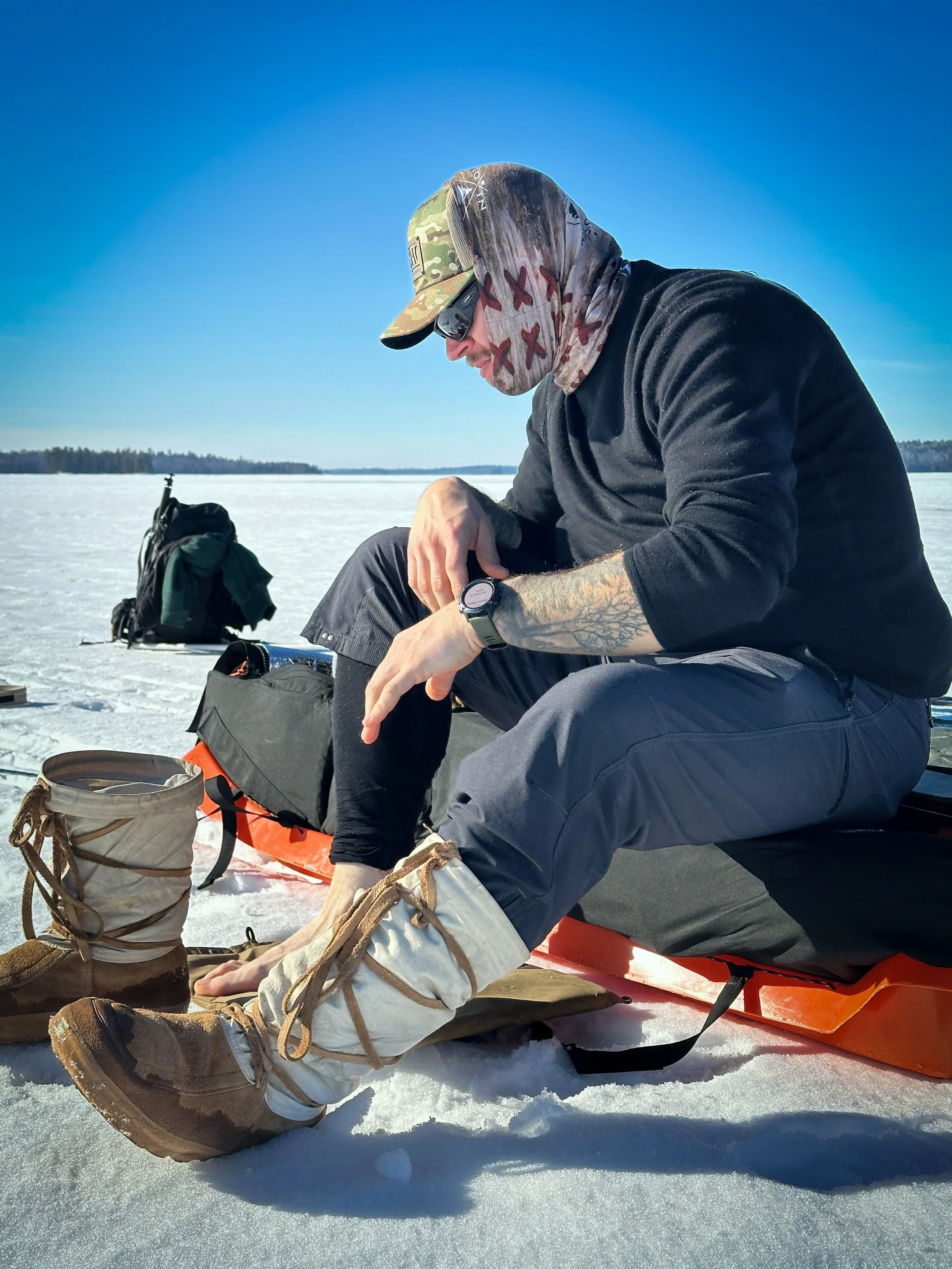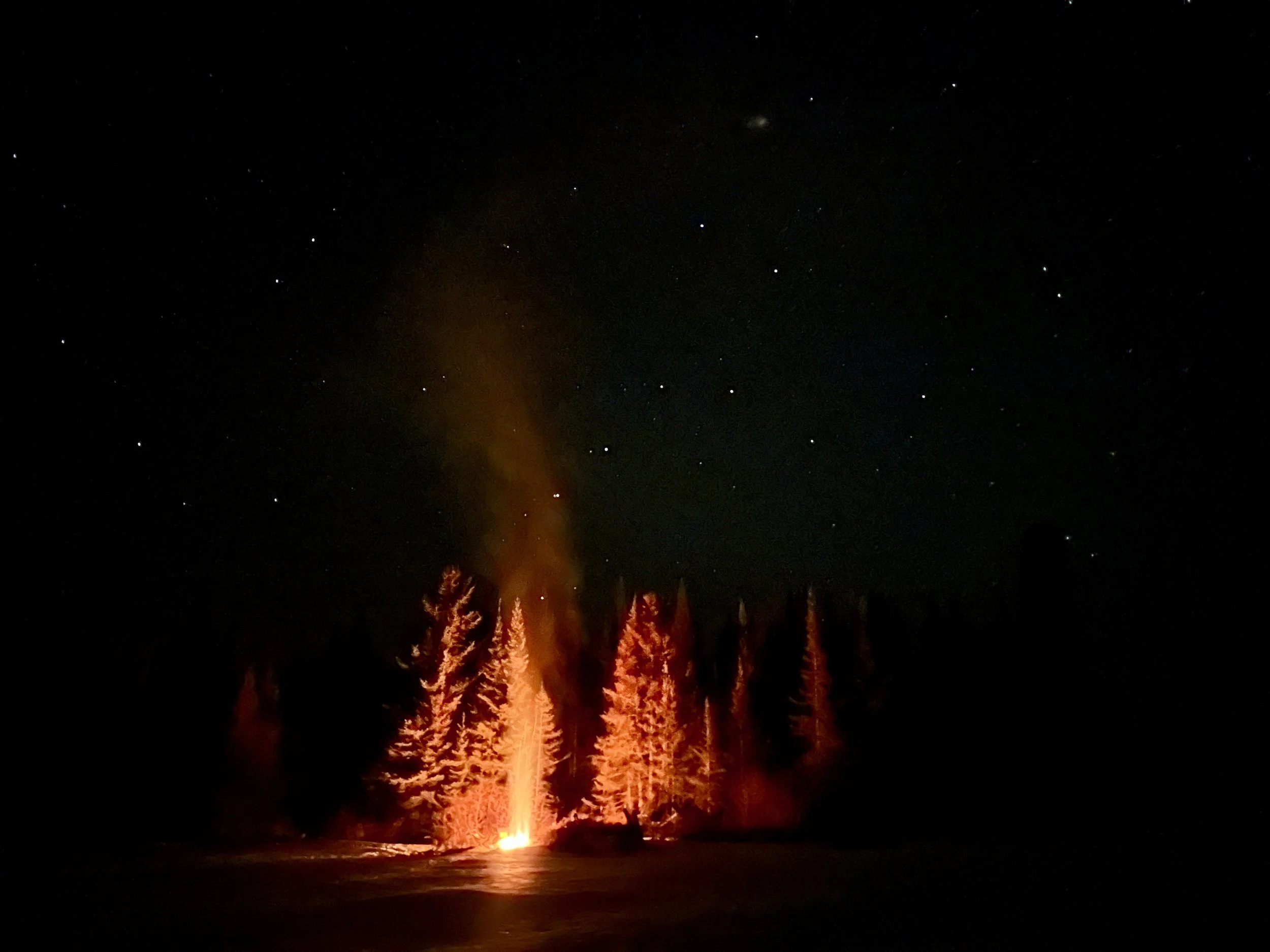Crossing Borders: Boundary Waters to Quetico Adventure | Part Five
For the past few months, I’ve been planning a 5-day adventure that would take us from the Boundary Waters Canoe Area Wilderness in Minnesota north to Quetico Provincial Park. This is the final installment of a series.
This article was published in Paddle & Portage Magazine.
Missed the other parts? Start here.
Map of our route that started at Moose Lake in the BWCAW, and looped up into Quetico Provincial Park.
QUETICO PROVINCIAL PARK – Punching through a few inches of snow, I paused at the end of the portage trail. As far as I could see was open water. Snow and ice skirted the edges near where we stood. Due to the thick brush and a narrow shoreline, it was impossible to scout safely. The small river disappeared around a bend. The choice was clear. We needed to change our route.
For the past couple of years, I’ve been itching to do a winter camping adventure that would be less about cozy basecamps; and more about covering bigger miles. After finding some interested friends, we started to make plans. Poring over maps in a coffee shop, we dreamt about route ideas and where to go. As our fingers followed imaginary lines of travel, our minds filled with the wildlife, pictographs, and pine-studded islands we might pass along the way. Someone suggested crossing the border.
After a long day, it is time to build a fire as darkness comes quickly.
Eventually, we decided on a route that started in the Boundary Waters Canoe Area Wilderness (BWCA), looping into Quetico Provincial Park. There’s something magical about heading into a place you’ve never been; where moose and bear outnumber humans, and solitude reigns.
As we continued to define our ideal experience, we decided to travel fast and light. Well, fast and light for winter camping. Covering more miles meant smaller sleds and pared-down gear. However, winter is still winter, so we packed with safety in mind.
WEATHER…OR NOT?
For weeks we watched the weather and combed through ice reports. The temps varied from unseasonably warm to a couple weeks of single digits and sub-zero degrees. A snowstorm blew through Ely, Minn., dumping around 6 inches. However, little more would fall during the trip. This comes as a surprise, as the BWCA usually sees 60 inches of snowfall each year.
Ice depth and open water became regular topics in our group chat. Before our trip, I sat down and noted potential water hazards on topographic maps. I knew that even during the coldest winters, there’s always open water somewhere, particularly where waterfalls or strong river currents are found.
In the days leading up to our trip, we started to see daytime highs in the 40s—incredible for early February. Talking with local outfitters and mushers confirmed that lake travel would be generally safe, though it would lack snow. Even before our adventure started, we were adapting to changing conditions.
There’s something raw and magical about sleeping on the ice.
ADAPTING TO COLD CAMPING
The warm spell solidified our decision to cold camp with lighter shelters. This meant we skipped packing a heavy canvas tent and stove. Hammocks, a tarp, and a three-season tent littered our living room floor.
Some of our heavier winter layers were removed. Expecting wetter conditions, we tossed in more socks and a few bread bags. The latter would come in handy if our footwear got soaked.
HEADING INTO THE UNKNOWN
Finally, on a bright February morning, we guided sleds onto the ice. Duffels were cinched tight with bands of webbing. Backcountry skis shushed over packed snow as we pulled sleds past steely cliffs in high relief. Sometimes the trail was so firm, all we needed was our boots. It sure didn’t feel like I was dragging 50 pounds.
We relaxed into the natural rhythms and comfort that come from being surrounded by quiet wilderness. Life becomes stripped down to the daily pattern of forward progress. Our day would end when we found a protected place to camp, preferably facing into the sun. Taking little time to set up our simple shelters, we’d spend the extra daylight hours gathering firewood, heating a pot of soup or relaxing.
During a break on the first day, someone commented, “Does it get any easier than this?” Adapting to the warm conditions and carrying less gear allowed for easy travel days.
FLEXING WITH THE CONDITIONS
Anticipation built as we neared the border. In some ways, the trip didn’t seem to begin until we entered Canada (almost 7 miles from the start). A sign at the border greeted us with “Welcome to Canada.” The waterfall at Prairie Portage cascaded toward big Basswood Lake. Open waters sparkled at the head of the falls. As a result, we took a spur trail that connected us to the portage. Dragging sleds alongside the roar of the cascade, we wondered about the other side. Getting to the bay, we spotted a large spread of open water. With the warming temps, I briefly wondered if we were being dumb.
Nearby, the Canadian ranger cabins stood silent, quietly waiting for soft water season. Our eyes followed the shoreline, searching for firm ice. Dragging sleds through the untracked snow, we diverted from the portage. After following the shoreline then checking the ice several times, we crept onto the lake. We were relieved to find the footing solid.
My sled weighed around forty pounds with water, food, and gear.
We saw no one else. The wilderness enveloped us as the sun dipped west. Long bands of peach, pink, and purple spread throughout the sky. The ice groaned and popped as temperatures began to drop.
Searching for a campsite and knowing we could camp anywhere, we chose an island site with westerly views. A couple of us set up shelters while others gathered firewood. One person chiseled a hole in the ice for water. As it got dark, I set up my bed directly atop the ice, 12 solid inches beneath me. The stars would be my ceiling for the night.
The next day our sleds passed quietly over the untracked portage. Minty strands of old man’s beard hung from trees. Gathering a few balsam needles as I hiked by, I cupped them in my hands, taking in their resinous scent.
The trail opened up to a blindingly white lake. Following it for an hour or so, it narrowed into a small bay. Another portage sat silent, waiting for us to cross. A small stream of water flowed alongside the trail.
While the others took a break, I decided to hike over the short portage to see what was waiting for us on the other side. The map showed a small river ahead. I wondered about open water. Sometimes these small systems are solidly hidden under thick layers of ice. Fingers crossed it that it would be frozen.
Nearing the end of the portage, I saw the reflection of trees in open water. Upon closer inspection, the choice became clear. It would not be safe to attempt this river passage. A bushwhack looked impossible. When the others had a chance to see it for themselves, someone wisely stated, “I’m definitely not comfortable with this.”
None could disagree.
This trip was shaping up to be an adventure with some interesting obstacles. With low snow depths and more areas of open water, who knew what we were in for?
Open water at the end of a portage.
CHANGE OF PLANS
Turning our sleds, we backtracked a couple of miles. Still following our planned route, we headed in the opposite direction. Angling into a long easterly bay, I crossed fresh moose tracks, their sharp edges indicating the beast had passed by earlier that morning.
Sitting in ultralight chairs during lunch, we couldn’t believe how easy it was to stay warm. We often traveled in single layers. Even with the open pockets of water, we were experiencing great conditions. We joked how our warmest layers might never see the light of day.
Open Water Continues
Strong, solid ice covered the lakes, but we were noticing a trend of open water at pinch points of land and places with cascades. Nearing the final portage of the day, I saw the telltale band of open water. The portage wasn’t accessible. I scanned the shoreline looking for another route. To the far left was solid ice. Through an opening in some cedars, I spotted a potential route up a short, steep hill. It provided a way to cross between two lakes, avoiding the open, cascading creek near the portage.
We shoved our sleds uphill, sweaty from the challenge. To our surprise, a beautiful campsite greeted us. A small pile of stones indicated a fire ring, with a few logs framing it as seating. Golden rays of light pushed through the pines, and pockets of moss carpeted the ground. It was an incredibly idyllic scene. Someone said aloud what we were all thinking: “Let’s spend the night here!”
Over the next few days, we continued to travel and explore. One day was spent taking a day trip to a long narrow lake. We observed otters as they played in a Morse code of hops and slides in quiet bays. Songbirds flitted about the woods, earnestly sharing their springtime songs. A few confused spiders came out from under the barks of trees.
Every night campfires kept us good company and dried out our damp clothes. Our last evening was especially mild. Trying to soak it all in, I dragged my sleeping pad out onto the lake and laid down. Above me, the Milky Way stretched from east to west. Shooting stars drew short trails across the sky.
Having adjusted to the pulse of the wilderness, I retreated to my sleeping bag set on a square of plastic in the woods. Nestled under the protection of pines, I didn’t want or need other shelter. When the sun rose, wolves called to us. Reluctantly, we would pack up for the last time and head south toward where we began. On this perfectly sun-filled day, this journey would end as gently as it began.
Traveling over ice was easy due to the consolidated snow. Ice averaged 12-14 inches thick.
A GENTLE WINTER ADVENTURE
Over five days, we traveled nearly 40 miles. Adapting to change was a big part of our experience. It’s hard to know how soon we’ll have another winter like it. With climate change, will this become the norm? Or was this an anomaly that taught us how to adjust and be comfortable with some unknowns?
We still were able to do some of our route while discovering new places. Being able to wander in two wilderness areas increased our sense of awe and appreciation. Knowing there are acres and acres of ice-locked water to travel over is a wonder. As with any adventure, part of the excitement is not knowing how the stories will unfold.
Winter camping is allowed anywhere in the BWCAW. In order to lessen our impact we generally avoided camping near summer campsites.


